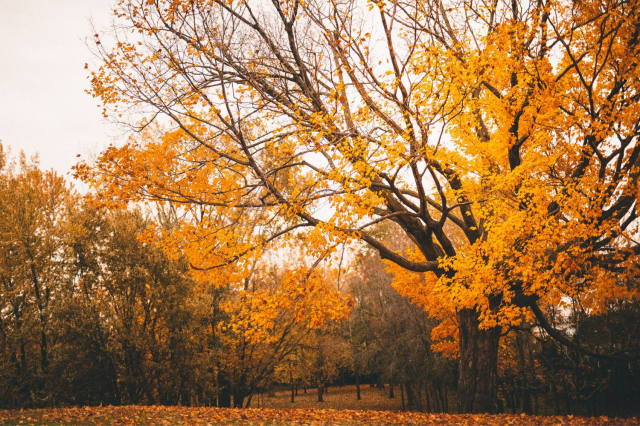There are four seasons in Spain: spring, summer, autumn, and winter. Each season has unique characteristics that affect the climate, nature, and cultural life of the country's different regions. Spring begins on March 21st, followed by summer on June 21st, autumn on September 23rd, and winter on December 21st. Each period offers diverse activities and traditions that reflect Spain's cultural and climatic richness.
The seasons of the year in Spain
The Spanish calendar is divided into four seasons, each with its own unique characteristics and nuances that mark the rhythm of life in the country.
Dates and characteristics of the seasons
Start and end dates
Spring begins on March 21 and ends on June 21, followed by summer, which runs from June 21 to September 21. Autumn begins on September 23 and ends on December 21. Finally, winter runs from December 21 to March 21. These dates are considered conventional and may vary slightly each year due to the Earth's position relative to the sun.
Influence of climate on the seasons
Seasons not only bring changes in temperature, but also alter weather conditions. Spring and summer are typically warmer, especially in the south of the country, where temperatures can exceed 40 degrees Celsius in July and August. In contrast, winter can bring snowfall in the north and sub-zero temperatures, while in the south, the climate is typically milder.
Variations in different areas of the country
- In northern Spain, the Atlantic climate prevails, with cold winters and cool summers.
- The central regions experience a continental climate, with large temperature fluctuations between day and night.
- In the south, the Mediterranean climate is typical, with mild winters and very hot summers.
Cultural and festive impact
Traditions and associated festivities
Throughout the year, the seasons are important not only in terms of climate but also culturally. In spring, fairs like the April Fair in Seville are held, symbolizing the rebirth of joy and life. In summer, popular festivities reach their peak with events like the San Fermín festival, where tradition and fun intertwine.
The influence of the seasons on music and art
The seasons have also inspired musical and artistic works in Spain. Spring is often depicted in classical art as a symbol of rebirth and hope, while autumn is associated with melancholy and the celebration of the harvest. These cultural manifestations reflect how the seasons influence the daily life and cultural identity of the Spanish people.
Spring in Spain
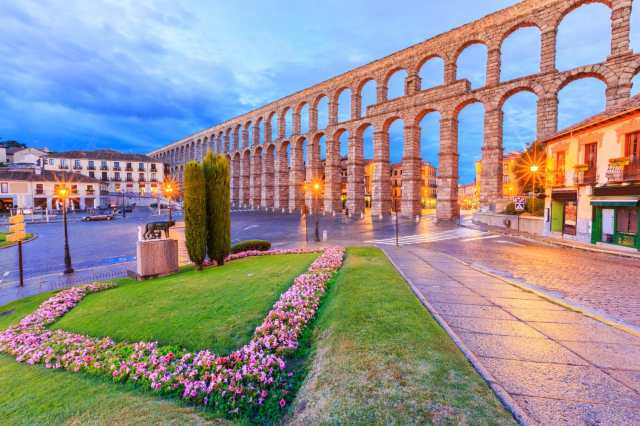
Spring in Spain is a vibrant period characterized by a rebirth of nature. This time is associated with pleasant temperatures and an explosion of color in the landscape.
Climate and temperatures
During this season, the weather becomes milder, offering relief from the winter cold. Most regions enjoy pleasant, sunny days, although some rain may occur.
Typical values in degrees Celsius
Spring temperatures typically range between 15 and 25 degrees Celsius, depending on the region. In the south, the heat sets in more quickly, while in the north, temperatures can be slightly cooler.
Rainfall and its importance for the environment
Spring rains are essential for the revitalization of flora and fauna. These precipitations ensure healthy crop growth and are essential for maintaining the balance of local ecosystems.
Recommended activities
The arrival of spring invites a variety of outdoor activities. The mild climate and beautiful views make this season the perfect time to explore nature and enjoy the local culture.
Exploring nature and cities
- Hiking trails in national parks such as Ordesa National Park and Monte Perdido.
- Walks through the gardens of countless cities, highlighting the cherry blossoms in places like the municipality of Jerte.
- Visits to rural areas where agricultural life awakens with the new crops at this time of year.
Featured Events and Festivals
Spring is a time filled with festivities in various localities. Cultural events reflect the rich heritage of each region.
- The April Fair in Seville, a festival filled with music, dancing, and good food.
- The Bonfires of San Juan in Alicante, which welcome summer with a celebration of fire and art.
- Spring festivals in many localities, where local traditions are fully displayed.
Summer in Spain
The summer season in Spain, which runs from June 21 to September 21, is characterized by a vibrant and warm atmosphere. This time is synonymous with vacations, festivities, and endless outdoor activities in a country where culture and tourism are dynamically intertwined.
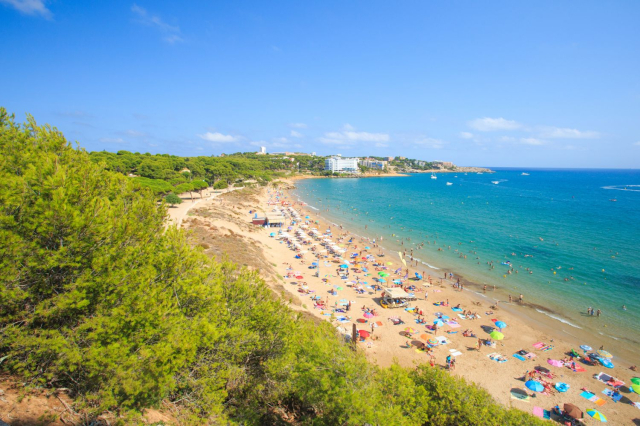
Climate and characteristics
From the beginning on June 21st to the end
Summer in Spain officially begins on June 21st , marking the summer solstice. This date marks the beginning of a season where temperatures rise significantly. The long days of sunlight invite you to enjoy the outdoors from early morning. The heat persists until September 21st, when the nights begin to cool down, but the weather remains warm during the day.
High temperatures in degrees Celsius
Summer temperatures can reach very high levels, especially in the south of the country. In areas like Andalusia, temperatures exceeding 40 degrees Celsius are common in July and August. On the other hand, in northern areas, such as the Basque Country, the climate is more temperate, with highs ranging between 25 and 35 degrees Celsius. This climatic variability allows for different activities depending on the region.
Tourist destinations and leisure
Beaches and water sports
One of the main attractions during the summer is the beaches that adorn the Spanish coast. Mediterranean shores, such as the Costa del Sol, Costa Brava, and the Balearic Islands, are popular destinations for tourists and locals alike. The warm waters, with temperatures around 25 to 30 degrees Celsius, are ideal for water sports such as surfing, paddleboarding, diving, and sailing. Those seeking a more relaxed atmosphere can immerse themselves on fine sandy beaches, enjoying the sun and the local cuisine based on fish and seafood.
Popular festivals and cultural events
Summer is also a time of celebration and diverse festivities throughout Spain. Events such as the famous San Fermín festival in Pamplona, held in July, attract thousands of visitors annually. These festivities not only feature bullfights, but also a festive atmosphere that includes music, dance, and a rich culinary offering. In August, the Málaga Fair and the patron saint festivals in many towns, where concerts and fairs are organized, provide a blend of culture and fun. These festivals reflect the cultural identity of the different regions and allow visitors to enjoy traditions rooted in the country's history.
Autumn in Spain
Autumn is a transitional season that reaches its peak beginning in late September, bringing with it remarkable changes in nature and a festive atmosphere in several regions of the country.
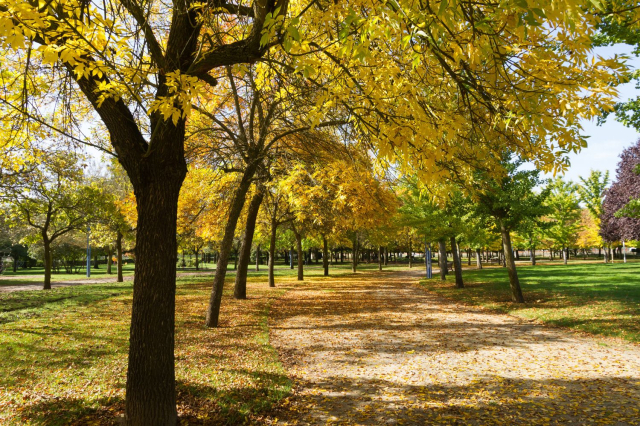
Transition and climate
Autumn begins on September 23rd
The autumn season officially begins on September 23rd and lasts until December 21st. This period is known for its mild climate, although temperatures can vary considerably depending on the location. Mornings are cool, and the summer heat often fades, giving way to gloomy days and longer nights.
Changes in nature and temperatures
As the season progresses, nature transforms with a spectacle of warm colors. The leaves on the trees change from green to shades of red, orange, and yellow. This display of colors is most noticeable in areas like northern Spain, where the forests are dense and offer visually stunning landscapes. Temperatures typically range between 10 and 20 degrees Celsius, providing a pleasant climate for outdoor activities.
Activities and gastronomy
Wine and tasting route
Autumn is grape harvest season, especially in wine-producing regions like La Rioja and Penedès. During this time, numerous wine routes and festivals are held, attracting both locals and tourists. Wine tastings become a quintessential experience, allowing visitors to enjoy the grape harvest and learn about the winemaking process. These activities not only celebrate wine culture but also promote culinary tourism.
Seasonal products and recipes
Autumn cuisine in Spain is notable for its use of seasonal produce. Chestnuts, mushrooms, pumpkins, and sweet potatoes are common ingredients in traditional dishes, enriching restaurant menus. Family recipes, such as stew or hot soups, are ideal for combating the cool weather. Local bakeries also offer delicacies such as panellets, which are especially popular in some regions during the All Saints' Day festivities.
Winter in Spain
Winter in Spain is a time of contrasts. Temperatures vary considerably depending on the region, creating very different experiences and activities characterized by the country's diverse climate.
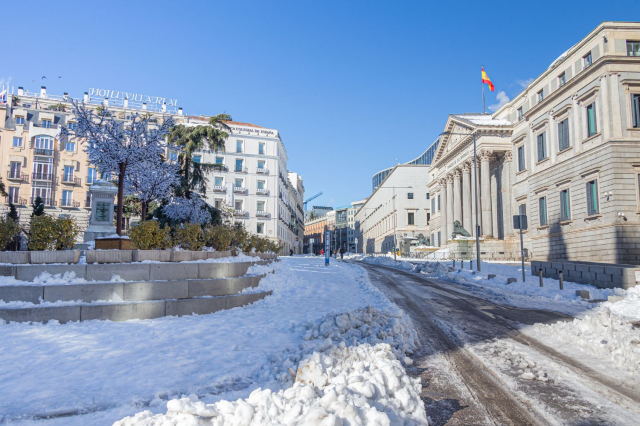
Climate and astronomical phenomena
During the winter, notable temperature variations can be observed. In the north, the days are cold, with temperatures often dropping below zero, while the south benefits from a milder climate.
Minimum temperatures and snowfall
Minimum temperatures in the north can reach records of -5 to -10 degrees Celsius. In contrast, in regions like Andalusia, highs of around 15 degrees Celsius are common. Snowfall is a common phenomenon in mountainous areas, where the landscape is covered in a blanket of white, ideal for winter sports.
Eclipses and astronomical observatories
Winter also brings opportunities for observing astronomical phenomena. Academics and amateurs organize meetings at observatories, where eclipses that may be visible in different parts of the country are analyzed. These events offer a perfect time to learn about the sky and enjoy astronomy.
Winter activities
Winter activities in Spain are varied, and any nature lover can find something to suit their preferences. Sports and celebration are crucial during these cold months.
Winter sports and ski resorts
Skiing is one of the most popular sports, especially in the Pyrenees and Sierra Nevada, where the ski resorts offer excellent services for enthusiasts. The slopes are well-equipped to welcome skiers and snowboarders, creating an ideal environment for snow sports.
Christmas celebrations and traditions
The arrival of December marks the beginning of significant festivities. Cities are lit up and decorated for Christmas, creating a festive atmosphere. Traditions include Christmas markets and the famous "bell ringing" celebration on New Year's Eve, where it is customary to eat grapes to the beat of the twelve bells.
Typical dishes of this season are a staple on Spanish tables, such as roast lamb, nougat, and polvorones. Each region has its own traditions, which enrich the cultural and culinary landscape of winter. Meals are enjoyed as a family, strengthening togetherness and the connection between loved ones.
Seasons of the year 2024 and 2025
As we move into 2025, it's important to note how this year's seasons compare to those of the previous year. Events and climate change can significantly influence the activities and traditions that characterize each season.
Anniversaries and climate changes
This section will discuss the differences and similarities between the 2024 and 2025 seasons, as well as forecasts that may anticipate significant changes in the climate.
Comparison of the seasons in both years
Last year, atypical temperatures were recorded in several regions of Spain. Winters were milder in the south and colder in the north, a pattern that could be repeated in 2025. It has been observed that in 2024, spring arrived with scant rainfall, affecting agriculture in some areas. In contrast, a wetter spring is expected for 2025, which would benefit crops.
Forecasts and expected changes
Meteorologists anticipate that the summer of 2025 will be warm, although not as extreme as 2024, when heat waves were recorded. Temperatures are expected to range between 30 and 40 degrees Celsius in most tourist destinations. Meanwhile, autumn is shaping up to be a transitional period, with a milder start than in previous years, while winter could bring earlier snowfall in several northern locations.
Dates to remember
Knowing key dates and festivals can help you better plan activities for each season. During 2024 and 2025, numerous seasonal festivals will be celebrated.
Holidays and lunar calendars
- Spring: Feast of St. Joseph and Father's Day (March 19) and April Fair in Seville (planned for late April 2025).
- Summer: San Fermín in Pamplona (July 6-14) and August festivities in various coastal towns.
- Autumn: Harvest-related festivities, especially in La Rioja (late September).
- Winter: Christmas, with celebrations from December 24 to 31, and Three Kings' Day on January 6, which marks the end of the Christmas festivities.
Importance of anniversaries in annual planning
Anniversaries not only add cultural richness but are also essential for event planning. In agricultural settings, for example, knowing when festivals occur can influence sowing and harvesting, ensuring optimal crop yields. Furthermore, many tourist events depend on these dates, so it's essential to consider them when planning trips to Spain and activities.
